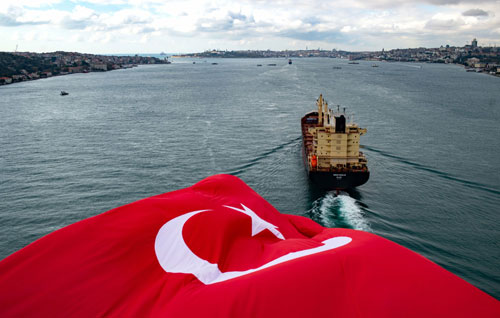Ankara
Anotable first quarter, shouldered by stronger than expected activity indicators despite the nationwide coronavirus lockdown and the fiscal tightening in recent months, could provide strength for the Turkish economy going forward, according to analysts and surveys.
The current second quarter is expected to come in even stronger as the country is forecast to log double-digit growth, mostly due to a so-called base effect.
In 2021 as a whole, exports could be the driver and help growth to return to around 5% in a strong rebound from the fallout of the pandemic, according to the government and analysts.
Yet, challenges remain, economists warn. Inflation remains high and much could depend on how the pandemic will affect tourism, a critical sector of the Turkish economy, as the country is preparing to emerge from the 2 1/2-week long lockdown just ahead of the summer season.
Data due later this month will likely show the country’s gross domestic product (GDP) grew by up to 6%.
This prospect was further signaled by robust activity indices, particularly the reading on Tuesday that showed that the nation’s industrial output jumped 16.6% year-on-year in March, far exceeding forecasts.
In the first quarter of 2021, industrial production grew 12.3% year-on-year, the data also showed.
It reflected the ongoing rebound despite renewed pandemic measures. Industrial production for the most part was exempt from the renewed measures, which included lockdowns, and thus was not noticeably affected.
The GDP grew by 6.4% in January, 6.6% in February and 6.5% in March year-on-year, according to a monthly model by BBVA Research.
Just before the reading was published, the rest of the indicators pointed to a growth of around 5.5% in the first quarter, Alvaro Ortiz Vidal, head of Big Data Research and chief economist for Turkey at BBVA Research, told Daily Sabah.
Treasury and Finance Minister Lütfi Elvan on May 6 said the growth in the January-March period could come at a 5.5%-6% rate, stressing the strong performance of exports and industry.
Elvan particularly stressed the activity rebound in the industrial sector, even suggesting that output and trade were in a better state than during the pre-pandemic period.
The headline Purchasing Managers’ Index (PMI) for the manufacturing sector rose to 52.6 in March from 51.7 a month earlier but was lower compared to 54.5 in January, according to data from the Istanbul Chamber of Industry (ISO) and IHS Markit.
Nonetheless, the reading has managed to stay above the 50 mark that denotes growth.
“The manufacturing sector PMI has been hovering over 50 base values since June of last year,” said Enver Erkan, a chief economist at Istanbul-based Tera Yatýrým..—Daily Sabah News










